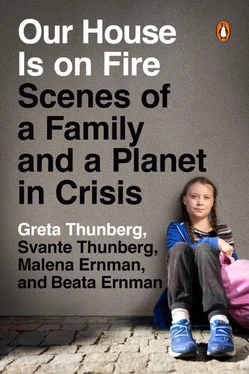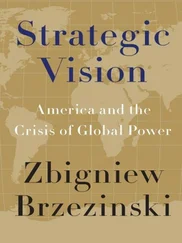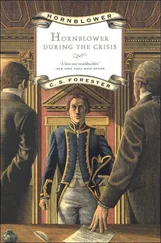Then Greta sits there sorting the gnocchi. She turns each one over, presses on them and then does it again. And again. After twenty minutes she starts eating. She licks and sucks and chews: tiny, tiny bites. It takes forever. An episode ends. Thirty-nine minutes. We start the next one and note the time in between bites, the number of bites per episode, but we keep quiet.
‘I’m full,’ she says suddenly. ‘I can’t eat any more.’
Svante and I avoid looking at each other. We have to hold back our frustration, because we’ve started to realize that this is the only thing that works. We’ve explored all other tactics. Every other conceivable way.
We’ve ordered her sternly. We’ve screamed, laughed, threatened, begged, pleaded, cried and offered every imaginable bribe. But this seems to be what works the best.
Svante goes up to the sheet of paper on the wall and writes:
Lunch: 5 gnocchi. Time: 2 hours and 10 minutes .
SCENE 7.
On the Art of Baking Cinnamon Buns
It’s the third weekend in September 2014, and later in the afternoon I’m going to Artipelag. But now it’s all about cinnamon buns.
We’re going to bake buns, all four of us, the whole family, and we’re determined to make this work. It has to.
If we can bake our buns as usual, in peace and quiet, Greta will be able to eat them as usual, and then everything will be resolved, fixed. It’s going to be easy as pie. Baking buns is after all our favourite activity.
So we bake, dancing around in the kitchen so as to create the most positive, happiest bun-baking party in human history.
But once the buns are out of the oven the party stops in its tracks. Greta picks up a bun and sniffs it. She sits there holding it, tries to open her mouth, but… can’t. We see that this isn’t going to work.
‘Please eat,’ Svante and I say in chorus.
Calmly, at first.
And then more firmly.
Then with every ounce of pent-up frustration and powerlessness.
Until finally we scream, letting out all our fear and hopelessness. ‘Eat! You have to eat, don’t you understand? You have to eat now, otherwise you’ll die!’
Then Greta has her first panic attack. She makes a sound we’ve never heard before, ever. She lets out an abysmal howl that lasts for over forty minutes. We haven’t heard her scream since she was an infant.
I cradle her in my arms, and Moses lies alongside her, his moist nose pressed to her head.
The buns are in a heap on the kitchen floor.
After an hour she is calm, and we assure her that we aren’t going to eat any more buns, not to worry.
‘Everything will work out, everything will be fine.’
Then it’s time for me to go to the performance. It’s a matinée. The family accompanies me to Artipelag and in the car Greta asks, ‘Am I going to get well again?’
‘Of course you are,’ I reply.
‘When am I going to get well?’
‘I don’t know. Soon.’
The car stops outside the spectacular building.
I go backstage and start warming up my voice.
SCENE 8.
At the Children’s Hospital
No matter how bad I’ve felt in my life, I’ve always felt good on stage. The stage is my sanctuary. But now some kind of boundary has been crossed and each performance of Xerxes is utter darkness. I don’t want to stand there. I don’t want to be there. I want to be at home with my children. I want to be anywhere but at the bloody, fucking Artipelag.
And most of all I want to be able to answer Greta’s question: ‘When am I going to get well?’
But I don’t have an answer to that. No one has an answer because first of all we have to figure out which illness she has.
• • •
It all starts at the health clinic a month into the autumn term. A couple of weeks have passed since we started noticing that something is not right, and a few days after Greta’s blood tests we get a call from a young doctor.
The test results don’t look so good, she says, and recommends that we go to Astrid Lindgren Children’s Hospital to have additional, more thorough tests done.
‘Should we schedule an appointment?’ Svante asks.
‘No,’ the doctor replies. ‘I think you should go there right now.’ Fifteen minutes later we’ve picked Greta up from school and are on our way to the Emergency Room. There we continue taking more tests and samples, and then we have to sit down and wait.
So we wait. As the pressure and worry grow. We call Svante’s mother, and ask her to pick Beata up from school.
Several hours later, a new doctor comes over and talks to us. Certain results indicate that something is seriously wrong. They’re just not sure exactly what yet. Svante collapses in a heap on the floor and for a few hours we find ourselves in freefall.
The gates to hell crack open and we pace back and forth in the tiny examination room where so many have paced before us and so many others will pace later.
We had bought a plastic-wrapped baguette with a curry filling; it’s on the stainless-steel stool by the door. I’m sitting on the floor with Greta on my lap, trying to amuse her.
In the years that have passed since, we have often thought back to those hours. Although never in detail. Svante recalls his legs giving way in the corridor and I remember the heavy, boundless darkness that enveloped us and all of the other families waiting there, each in our own small consultation room. I only remember the little that I have chosen to remember. The rest I can’t bear to think about.
Grazing that memory, even for a split second, is usually enough to put life in perspective.
Yet another doctor comes in. She moves the plastic-wrapped baguette off the stool and sits down, goes through the results and calms us. They’ve checked and everything looks fine. There are no signs that anything is wrong and we can breathe out, thank the gods and go home.
Taking the stage that night was not much fun, but it was, to say the least, a luxury compared with being one of the families that didn’t get to leave the hospital that late afternoon; the families still sitting there in the consultation rooms facing the gates of hell.
• • •
A few days later we get another call from Astrid Lindgren Children’s Hospital. The doctor recommends that we contact BUP, the psychiatric service for children and adolescents. The tests haven’t shown anything that can’t be explained by the fact that Greta has started having significant problems with her appetite.
‘It’s not unusual among girls in early puberty,’ she says. ‘Very often the cause is psychological rather than medical.’
Sometimes the body’s wisdom surpasses our own. Sometimes we use the body to express what we can’t express in any other way. And sometimes, when we don’t have the strength or the words to describe how we’re feeling, we use the body as an interpreter.
Not eating can mean many things.
The question is what.
The question is why.
The thought that Svante or I would have managed to eat that plastic-wrapped curry baguette in the waiting room at Astrid Lindgren Children’s Hospital is inconceivable, and the insight that Greta is feeling the way we did then, all the time, is somehow there, constantly grinding away at us.
Svante and I continue to look for answers. I spend the evenings reading everything I can find on the internet about anorexia and autism and eating disorders. We’re sure it’s not anorexia. But, we keep hearing that anorexia is a very cunning disorder and will do anything to evade discovery.
So we keep that door wide open.
Читать дальше






![Корнелл Вулрич - Murder at Mother’s Knee [= Something That Happened in Our House]](/books/398097/kornell-vulrich-murder-at-mother-s-knee-somethin-thumb.webp)





